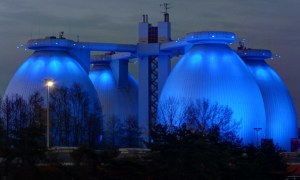🕑 Reading time: 1 minute
Chemical Oxygen Demand (COD) and Biological Oxygen demand (BOD) are the two main characteristic properties that indicate the strength of sewage. Both the parameters test the oxygen-demanding strength of the wastewaters.
The basic features of COD, BOD and their basic differences are explained in this article.
Contents:
Chemical Oxygen Demand (COD)
The amount of oxygen that is required for the chemical oxidation of the organic and inorganic chemicals present in the wastewater by utilising oxidising agents like Potassium permanganate, Potassium dichromate etc. is called as chemical oxygen demand (COD). The presence of COD facilitates rapid chemical oxidation of organic matter without any additional equipment. This is the only method that enables to determine the organic load in heavy toxic sewage.
To determine COD, the sample water is taken in a closed container and incubated with a strong oxidant like potassium dichromate with sulphuric acid under standard conditions of temperature and time. COD is the oxygen demand that is consumed by both inorganic and organic matter present in the wastewater sample. The chemical oxygen demand is expressed as the mass of oxygen consumed over the volume of the solution. Its SI unit is milligrams per liter (mg/l).
Biological Oxygen Demand (BOD)
BOD is defined as the amount of oxygen demanded by the micro-organisms in the sewage for the decomposition of bio-degradable matter under aerobic condition. This is the most commonly used parameter to determine the strength of municipal or organic quality of the water.
The standard BOD test determines the amount of oxygen required by the micro-organisms for the decomposition of the bio-degradable matter present in the wastewater sample under 5 days of aerobic condition at a temperature of 20 degree Celsius. It is measured in mg/l.
BOD is determined for designing treatment facilities. It is used to determine the size of activated sludge units and trickling filter units. It is also used to determine the efficiency of various treatment units.
Chemical Oxygen Demand (COD) v/s Biological Oxygen Demand (BOD)
BOD measures the amount of oxygen required by the aerobic organisms to decompose organic matter and COD measures the oxygen required to decompose organic and inorganic constituents present in the wastewater by chemical reaction. Hence, the value of COD is greater than BOD.
The basic differences between BOD and COD are enlisted in the table below.
Table.1. Difference between BOD and COD
| BOD | COD |
| BOD is a biological oxidation process | COD is a chemical oxidation process |
| BOD is performed by aerobic organisms | COD is performed by chemical reagents |
| BOD is measured by keeping a sealed water sample for incubation for a period of 5 days at 20 degree Celsius. The reduction in dissolved oxygen gives the amount of oxygen consumed by the aerobic organisms. | In COD test, the water sample is incubated with a strong oxidant in combination with boiling sulphuric acid for a specific period of time and temperature. |
| BOD value is determined by 5 days. | COD can be measured within few days. |
| BOD value is lower than COD | COD value is always greater than BOD |
| BOD is used to oxidize the natural organic matter and organic waste in the water | COD is capable of degrading the industrial sewage. COD does not measure the amount of oxygen consumed by acetates present in the water sample |
Based on the strength of BOD and COD present, the domestic wastewater can be classified as weak, medium, strong and very strong as shown in table-2 below. The strength given is based on the water consumed per person.
Table.2. Characteristics of Domestic Waste Water in terms of BOD and COD
| Classification | BOD (mg/l ) | COD (mg/l ) |
| Weak | <200 | <400 |
| Medium | 350 | 700 |
| Strong | 500 | 1000 |
| Very Strong | >750 | >1500 |
Also Read: Characteristics of Waste Water


